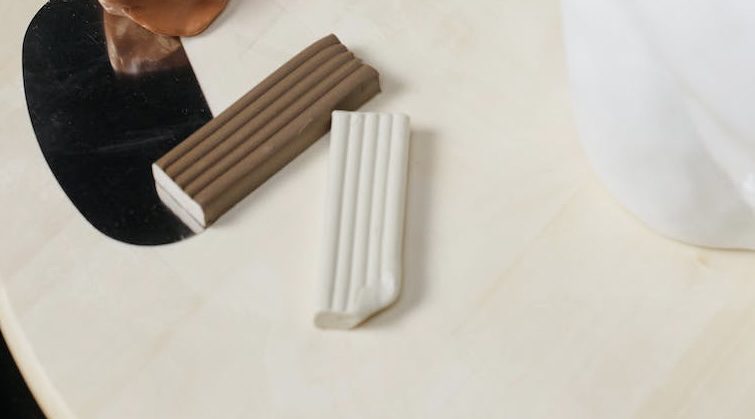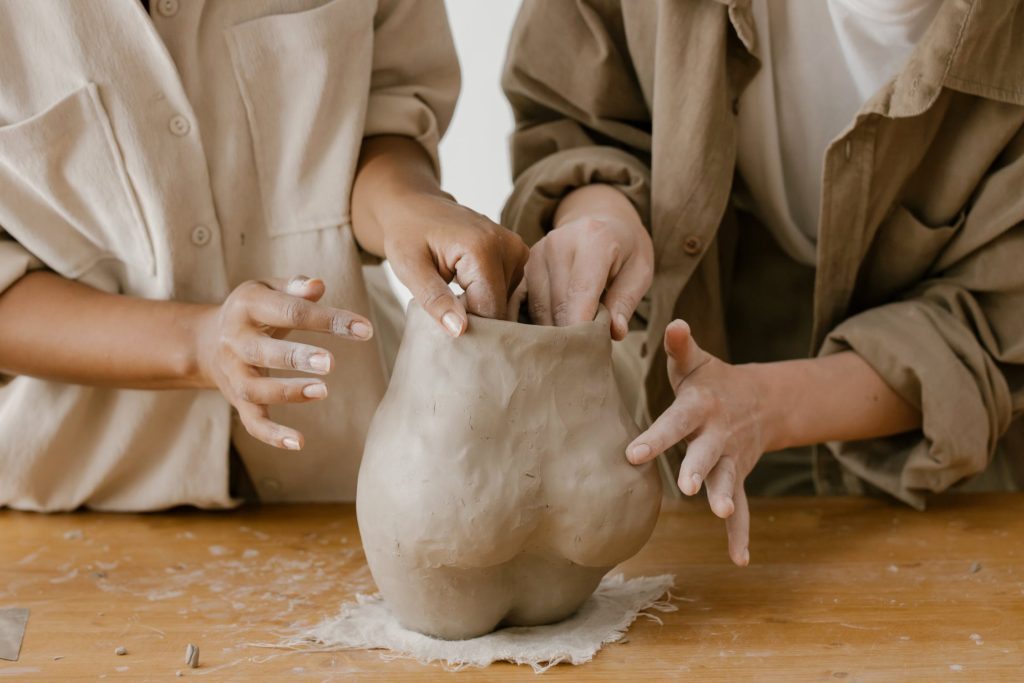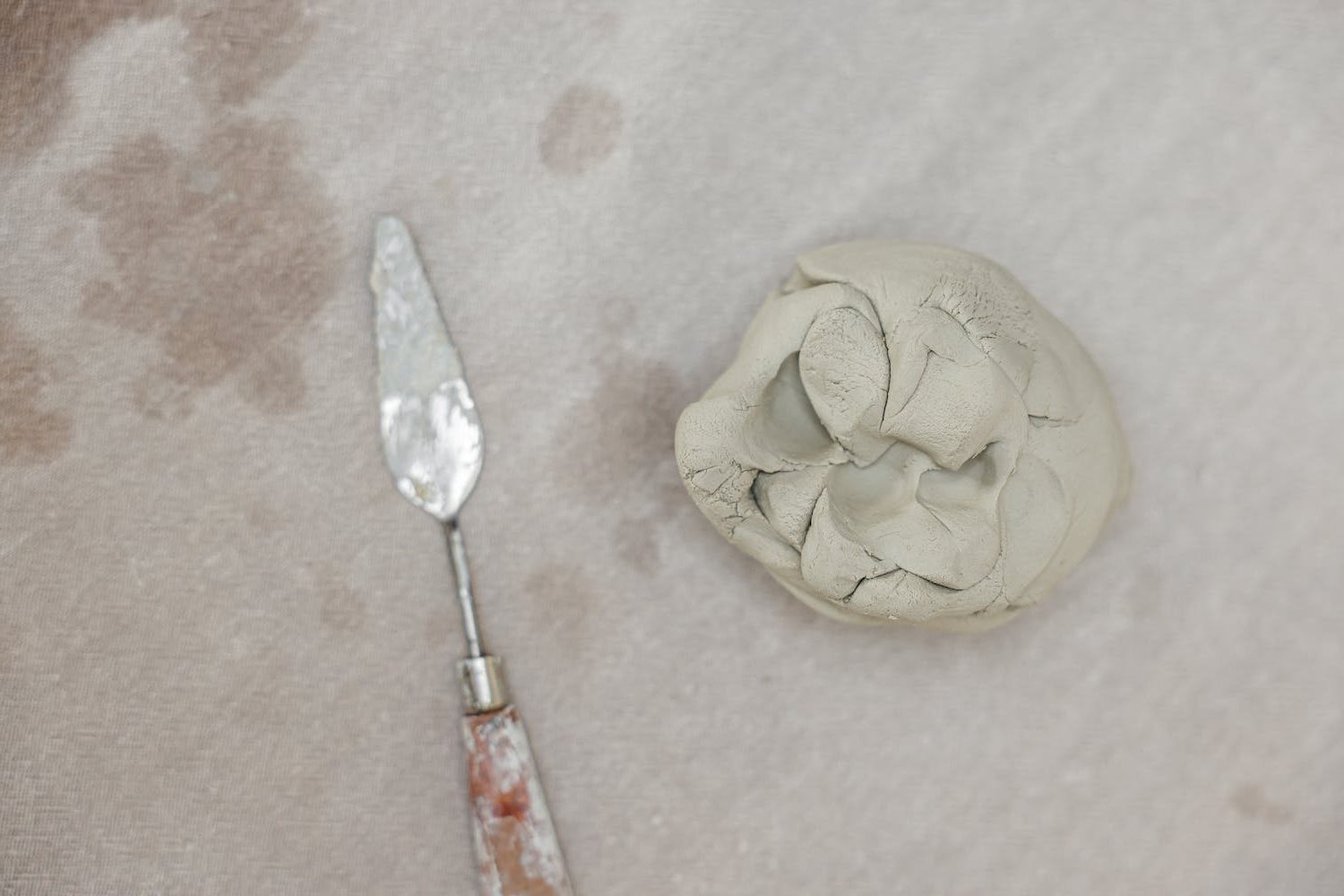Sculpting is something that I have recently started to do. For people that like to craft, the two main types of clay to choose from are air dry and polymer. In this post I will address a comparison between air dry clay and polymer clay for weighing out your options.
What to look for
Air dry clay comes in one large container, all together, that when exposed to air will instantly start drying (it takes a few hours). It is one color so therefore comes in larger quantities.
Polymer clay typically comes in smaller plastic wrapped rectangles. All of the colors are separated and have ridges in them so you can clearly mark out how much you are going to be cutting off.

What its made out of
Air dry clay is made from natural materials. The main materials are of course, clay, paper pulp, and other natural fibers. This makes it very water soluble, which also means that it dries pretty quickly. The texture then can be built up to be thinner or thicker depending on the water usage.
Polymer clay is a synthetic material made from PVC particles, plasticizers, and pigments. This makes the consistency a lot more stiff, and often needs to be “warmed up” and kneaded in order to be a bit easier to maneuver.

Drying process
The most significant difference between air dry clay and polymer clay is the way they dry.
Air dry clay dries naturally when exposed to air. This means that when you are working on it, you will need to focus on one area at a time and make sure that youre satisfied before moving to the next. Much like acrylic paint, working in sections will play to your favor with this.
Air dry clay will shrink as it dries, which can cause cracks and deformations. The end result is that it might have a more fragile frame. It usually is susceptible to chipping just a bit, but can easily be varnished and painted. It typically dries quite matte, and a little powder-y.
Polymer clay requires heat to cure. If you are working on something at your house, that means that you can typically just place it in your oven to bake. It can be drilled, sanded, and carved, while air dry clay is softer and more fragile.
The end result with polymer clay is a more durable frame. It has a more velvet finish and dries fairly smooth, depending on how you sculpted. Once it has been cured, polymer clay will not crack, break, or crumble easily.
The pros/cons of each
The main benefits that there are about air dry clay are the price, its an easier sculpting process, and it is more eco-friendly.
Since air dry clay is water soluble, you can thin it out really well. This means that it is much easier to work with in your hands, and you can basically make any consistency that you would like. For some people, eco-friendly products are a deal breaker. Air dry clay is very eco friendly, hence why it has some disadvantages in the consistency that are made with artificial parts in polymer.
The cons of using air dry is, like I said, it shrinks. When it shrinks, because it removes moisture, it can crack. You also have to paint the clay after you are done sculpting since it typically only comes in the one white shade.
The benefits of polymer are that you do not have to paint it, it is quite durable/long-lasting, and it is very versatile.
Polymer clay it typically used for making beads and parts of jewelry. I have used it in the past to make earrings and beads, and it holds up really well. Also, it does not shrink during the drying process. It is commonly used for more durable activities such as those in general. It is the preferred clay for smaller items in general.
Polymer is a but harder to work with. It takes some skill to blend the pieces together, and it also takes a bit of time to blend colors together to make a new color. It is quite a specific consistency that cannot really be changed.
Cost
Typically, air dry clay is cheaper than polymer clay. It is commonly known as the cheaper alternative in general. This is mostly because polymer tends to come in desired colors, whereas air dry is typically a white color that is then painted over after it dries. So, you are essentially in my opinion paying the same price anyways, including the paint that goes into air dry’s end result cost.
FAQ
How long should I bake my polymer clay for?
For each quarter of an inch of thickness, it is recommended that you bake it for 15 minutes at 225F. Usually, to combat this, I make a base with tin foil and place clay all around it so that my clay itself is not too thick and I am not wasting too much of my colors.
Do you need tools to sculpt with air dry clay or polymer clay?
I would say yes. If anything, use some toothpicks to make sure that you can sculpt out smaller areas that your fingers cannot reach, and just adapt to the medium!

